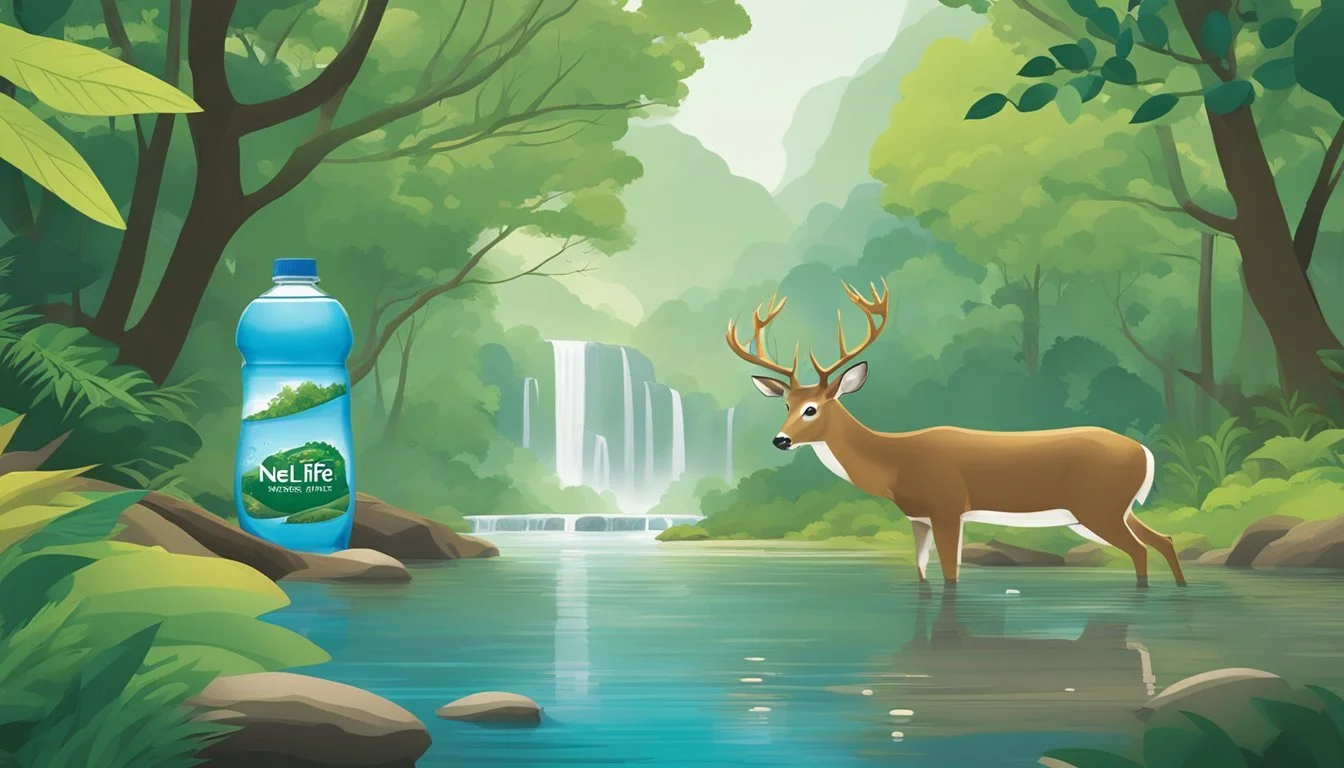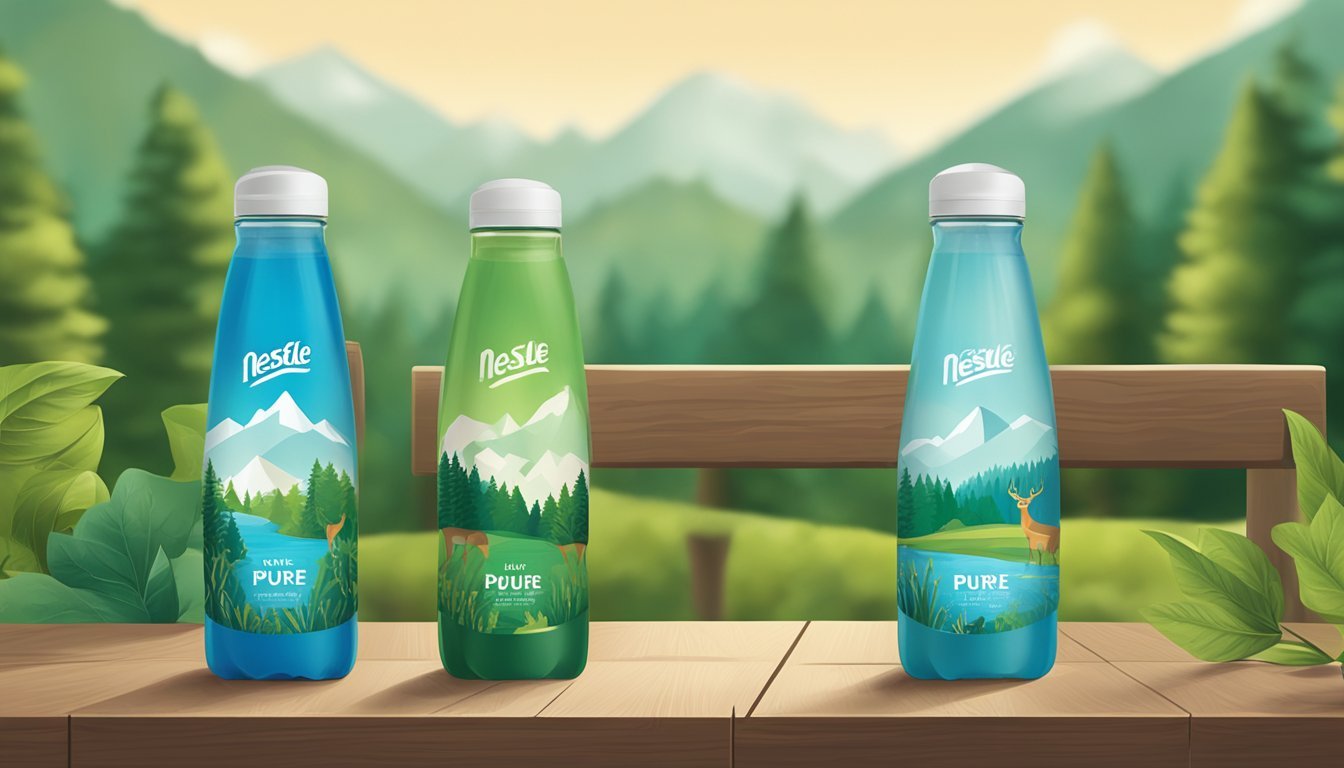Deer Park vs. Nestlé Pure Life
A Comparative Analysis of Bottled Water Brands
Bottled water has become a staple in the daily lives of many, and with a vast array of brands on supermarket shelves, choosing the right one can seem like a daunting task. Among these brands, Nestlé Pure Life and Deer Park stand out for their market presence and the quality they claim to offer. Nestlé Pure Life, bottled by the largest water bottling corporation in the world, positions itself as a purified water choice that's accessible and reliable. Meanwhile, Deer Park prides itself on offering 100% natural spring water, sourced from protected springs and touting a crisp and clean taste profile.
The journey to determine which bottled water is superior involves a comprehensive look at several factors, such as the source of the water, the purification process, the presence of any additives, and the taste, which for many, is the ultimate deciding factor. While Nestlé Pure Life is often criticized for being just average despite its global brand presence, Deer Park is typically recognized for its regional sourcing strategies along the Eastern Seaboard, aiming to provide a natural and refreshing beverage option.
The Importance of Hydration and Water Quality
When choosing bottled water, consumers must consider both the hydration benefits and the water's quality. These factors are crucial to health and well-being.
Health Benefits of Proper Hydration
Hydration is integral to the body's function; it regulates temperature, keeps joints lubricated, and aids in transporting nutrients. Water is essential because it acts as a medium for these physiological processes. Adequate hydration maintains the balance of electrolytes, which are minerals carrying an electric charge, crucial for muscle function and other cellular processes.
Quality Indicators of Bottled Water
Water quality is measured by several metrics, including the presence of PFAS chemicals and the concentration of beneficial minerals. PFAS, a group of man-made chemicals, are a concern due to potential health risks. Meanwhile, the presence of minerals like calcium and magnesium contribute to taste and nutritional value. Good quality water should have these minerals in balanced amounts that benefit the body without excess. Manufacturers often follow multi-step purification processes to ensure purity and remove contaminants, which can be an indicator of the commitment to quality consumers seek in bottled water.
Comparing Deer Park and Nestlé Pure Life
In the realm of bottled water, two prominent brands, Deer Park and Nestlé Pure Life, stand out for their distinctive qualities. This section assesses their histories, sources, and taste profiles to inform consumer choice.
Brand History and Reputation
Deer Park boasts a legacy that reaches back to 1873 with sources along the Eastern Seaboard. The brand underscores its commitment to 100% natural spring water. In contrast, Nestlé Pure Life began in 1998 deriving from a multi-step purification process. As a part of Nestlé Waters, the largest bottled water company globally, Pure Life aims at broad accessibility and consistent quality.
Source and Production Process
Deer Park: Sources its water from carefully selected natural springs, followed by a light filtration process.
Nestlé Pure Life: Utilizes a multi-barrier approach that includes distillation, demineralization, and added minerals for flavor.
Brand Source Process Deer Park Natural springs Minimal filtration Nestlé Pure Life Varied sources including well or tap water Purification and added minerals
Deer Park water naturally flows from springs, which may lend to the fresh taste customers can experience. Nestlé Pure Life, whereas, emphasizes the purification aspect, potentially targeting consumers who are cautious about possible contaminants in spring or tap water.
Taste Profiles
The taste profile of Deer Park is often described as crisp and clean, aligning with consumer expectations for spring water. On the flip side, Nestlé Pure Life offers a predictable taste, which may come across as average to some palates, due to its rigorous processing and the addition of minerals. Unlike premium brands such as Evian, which is known for a distinctive mineral balance, both Deer Park and Nestlé Pure Life seem to aim for a neutral flavor profile that appeals to a wide audience.
Packaging and Environmental Impact
When evaluating Deer Park and Nestlé Pure Life bottled waters, one must consider both the packaging materials used and the companies' engagement with environmental sustainability. This section delves into how each brand approaches plastic bottle usage and their respective recycling and sustainability initiatives.
Plastic Bottle Usage
Deer Park and Nestlé Pure Life predominantly use plastic bottles for their water products. Plastic bottles are often chosen for their lightweight nature and durability, which reduces transportation costs and carbon footprint. Both companies use bottles that are free from BPA, a chemical that's been of concern to health-conscious consumers. Recently, there has been a shift in the industry, looking into alternative packaging such as boxed water or glass bottles, which have a lower environmental impact in their production and disposal. Nestlé Pure Life offers a range of products, including some in refill formats and multipacks that reduce plastic usage, whereas Deer Park also provides refillable jugs of water for both commercial and personal use.
Recycling and Sustainability Initiatives
Nestlé Pure Life and Deer Park, both understand the critical need for responsible packaging and recycling practices. Their bottles are designed to be 100% recyclable, and they encourage consumers to recycle after use.
Deer Park: They have implemented initiatives to reduce the amount of plastic in their bottles and have partnered with recycling organizations to promote consumer recycling.
Nestlé Pure Life: Nestlé has publicized sustainability goals, aiming to reduce their plastic footprint by making improvements in their production process and investing in community recycling education programs.
Both companies recognize the importance of contributing to a more sustainable future, although the effectiveness and reach of their sustainability efforts vary and are ongoing commitments.
Health Concerns and Regulations
When considering the health implications of bottled water brands like Deer Park and Nestlé Pure Life, it is crucial to understand the presence of potential contaminants and the regulatory standards these products must adhere to.
Presence of Contaminants and Heavy Metals
Deer Park and Nestlé Pure Life undergo regular testing for contaminants, including heavy metals such as lead, arsenic, and mercury. These substances can pose significant health risks if consumed at high levels. For instance, lead exposure can cause neurological issues, while arsenic has been linked to increased risks of cancer with prolonged exposure.
Lead: Rarely found in source water but can contaminate water through distribution systems.
Arsenic: Occurs naturally in the environment; bottled water brands are expected to keep levels as low as possible.
Mercury: Usually present in water at extremely low concentrations.
PFAS chemicals, which have been found in various consumer products, are under increasing scrutiny. Some studies have detected PFAS in different bottled water brands, though levels vary. These substances are not regulated by federal standards, but the International Bottled Water Association (IBWA) has set guidelines to assure consumers of the safety and quality of bottled water.
Regulatory Standards and Compliance
Bottled water is regulated by various agencies to ensure safety and compliance with health standards.
Deer Park: Adheres to both the Food and Drug Administration (FDA) standards and IBWA guidelines, which encompass quality assurance and the absence of contaminants.
Nestlé Pure Life: Claims strict adherence to regulatory standards, and implements its own quality assurance processes.
FDA Regulations: The FDA sets legal limits for levels of certain contaminants in bottled water, which are similar to those imposed by the Environmental Protection Agency (EPA) for tap water.
IBWA Standards:
Exceed the FDA standards.
Require member companies to test for contaminants and abide by cleanliness protocols.
Include voluntary testing for substances such as PFAS.
Both brands must consistently meet these regulations to remain in compliance and to ensure that their products are safe for consumption.
Product Variety and Consumer Choice
When choosing bottled water, consumers consider the range of products and the variety of alternatives offered by brands. Deer Park and Nestlé Pure Life cater to these demands with a selection of offerings.
Range of Products Offered by Deer Park and Nestlé Pure Life
Deer Park boasts an array of water products, including:
Spring water
Sparkling water with naturally occurring minerals
Flavored sparkling water available in various fruit essences
Nestlé Pure Life, on the other hand, offers:
Purified water enhanced with a light blend of minerals
Flavored water with zero calories and no artificial colors or sweeteners
Comparative Analysis of Alternatives
When comparing Deer Park and Nestlé Pure Life to other popular water brands, consumers often evaluate taste, quality, and product offerings.
Poland Spring: Similar to Deer Park, it is known for its natural spring water and offers sparkling options.
Dasani: A Coca-Cola brand known for its purified water, infused with minerals for a crisp taste.
Aquafina: PepsiCo's brand of purified water that also competes in the purified water market with both Nestlé Pure Life and Dasani.
LIFEWTR: Positioned as a premium bottled water brand, it differentiates itself with enhanced pH levels and electrolytes for taste.
smartwater: Offers vapor-distilled water with added electrolytes, directly competing with LIFEWTR's value proposition.
Consumers seeking alternatives to Nestlé Pure Life may lean towards brands like Dasani and Aquafina due to their purified water products, whereas those looking for natural spring water similar to Deer Park may consider Poland Spring. Those interested in additional benefits like electrolytes might opt for LIFEWTR or smartwater. Each brand's product line provides consumers with various options to meet their specific hydration preferences.
Scientific Research and Expert Perspectives
In assessing the quality of Deer Park and Nestlé Pure Life bottled water, one must consider the scientific data on contaminants, pH levels, and microplastics, as well as findings from investigative journalism.
Studies on Bottled Water Consumption
Researchers have examined various brands of bottled water, focusing primarily on pH levels and the presence of contaminants. It has been found that water with a balanced pH closer to neutral is generally considered better for consumption. Studies specifically analyzing Deer Park and Nestlé Pure Life have documented that Deer Park typically features a pH level that is naturally within the optimal range for drinking water, often between 6.3 and 7.7. On the other hand, Nestlé Pure Life undergoes a demineralization process followed by an addition of minerals, and is reported to have a variable pH that can range from neutral to slightly alkaline.
Research concerning contaminants has highlighted the presence of potential chemicals in bottled water. For instance, a study by the Environmental Working Group (EWG) has previously reported the detection of various contaminants in bottled water brands, although specific recent data for these two brands would require further review for conclusive remarks.
Investigative Journalism Reports
Investigative journalists have played a crucial role in unveiling the quality of bottled water. Reports have surfaced regarding the presence of microplastic particles in various bottled water brands. A prominent report by Consumer Reports found synthetic polymer particles in some tested bottled water brands. Nestlé Pure Life was among those tested, and reports indicated notable levels of microplastic particles, with further research suggesting variability across different batches.
Additional journalism efforts have shed light on sourcing and purification practices of bottled water brands, sometimes raising questions about the overall quality and transparency. As the largest bottled water company, Nestlé's practices have been under the microscope of investigative journalists more often than those of Deer Park. However, specific comparative findings on Deer Park in this aspect are less frequently featured in mainstream investigative reports, suggesting the need for more focused scrutiny.
Consumer Perception and Market Trends
The competition between Deer Park and Nestlé Pure Life centers heavily around consumer preferences and their reflected market behaviors. This section dissects public taste preferences and scrutinizes the available popularity and sales data, offering a snapshot of where these brands stand in the eyes of the consumer.
Public Taste Preferences
Consumers often make their bottled water selections based on perceived taste quality, which can be influenced by the source of the water and the purification process it undergoes. Deer Park is known for its spring-sourced water, which many consumers find appealing for its natural purity and flavor profile. Nestlé Pure Life, instead, often faces criticism for its average taste, as it is sourced from wells or municipal supplies and undergoes a rigorous purification process. This difference in water source and taste may influence public preference.
Popularity and Sales Data
When it comes to sales data, both Coca-Cola and PepsiCo are major players in the bottled water market with their respective brands, yet neither directly competes with Deer Park or Nestlé Pure Life. Despite this, the overall popularity of a brand rests in its market share and consumer reach. As per the available research, Nestlé Pure Life holds a significant position due to its global parent company, Nestlé Waters, being one of the largest bottled water corporations in the world. However, market trends suggest a demand for not only widespread availability but also for water quality and taste, areas where Deer Park has received a more favorable consumer response.
Conclusion
Deer Park and Nestlé Pure Life are two recognized brands in the bottled water market. They cater to consumers seeking hydration options that offer convenience and taste. Deer Park, known for its 100% natural spring water, positions itself as a provider of crisp and clean-tasting water. This lends credibility to those who prioritize natural water sources.
In contrast, Nestlé Pure Life, despite being part of the largest bottled water corporation, has been described as 'painfully average'. This suggests that while Nestlé Pure Life is widely distributed and recognized, it may not necessarily be the best bottled water for those seeking a standout taste or quality.
When choosing between these two, consumers may consider the following factors:
Source: Deer Park is sourced from springs along the Eastern Seaboard, purporting a natural origin.
Taste: Opinions suggest Deer Park may have a fresher taste compared to the more neutral profile of Nestlé Pure Life.
Additives: Nestlé Pure Life reportedly contains additional elements like sodium and preservatives, which may sway purists towards Deer Park.
It is important that individuals select their bottled drinking water based on their personal preferences, health needs, and environmental considerations. Both brands provide safe and regulated drinking water options but may differ in taste, source, and overall consumer experience.





